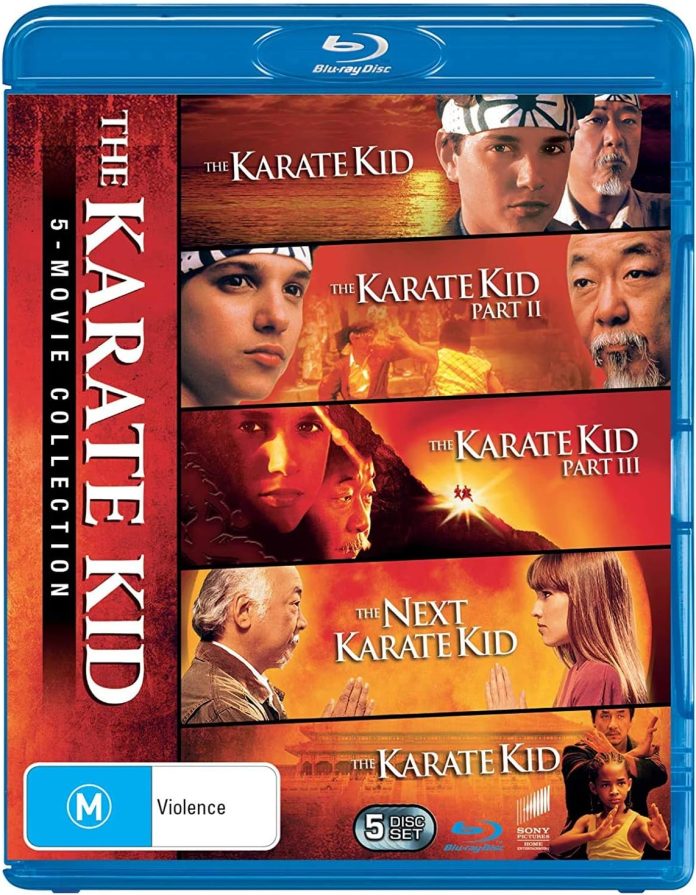The Karate Kid movie series has earned a special place in the hearts of many martial arts enthusiasts and movie lovers alike. As someone who has grown up watching these films, I have always admired the blend of action, life lessons, and character development they offer. In this article, I will provide a comprehensive review of the Karate Kid series, exploring its themes, characters, and the evolution of its storylines over the years.
The Original Karate Kid (1984)
Plot Summary
The original Karate Kid, released in 1984, tells the story of Daniel LaRusso, played by Ralph Macchio, a teenager who moves to a new town and struggles to fit in. After encountering a group of bullies, Daniel finds guidance from Mr. Miyagi, portrayed by Pat Morita, a wise and skilled martial artist. Their relationship forms the heart of the film, as Mr. Miyagi teaches Daniel important lessons about karate, respect, and self-discipline.
Themes and Impact
The themes of resilience, mentorship, and personal growth resonate throughout the movie. I remember feeling inspired by Daniel’s journey from a bullied teenager to a confident martial artist. The film’s iconic catchphrases, such as “Wax on, wax off,” have become ingrained in popular culture, emphasizing the importance of hard work and dedication.
Cultural Significance
The original Karate Kid not only popularized martial arts in America but also introduced audiences to a deeper understanding of Eastern philosophies. It helped bridge cultural gaps, showcasing the significance of respect and discipline in martial arts. The movie’s success led to a renewed interest in karate schools across the nation.
The Karate Kid Part II (1986)
Continuation of the Story
In the sequel, The Karate Kid Part II, released in 1986, Daniel and Mr. Miyagi travel to Okinawa, Japan, where Mr. Miyagi confronts his past. This film expands on their relationship and delves into themes of family honor and cultural heritage. I found the exploration of Mr. Miyagi’s backstory to be compelling, adding depth to his character.
New Challenges
Daniel faces new challenges in this film, including a rival in the form of Chozen, played by Yuji Okumoto. The fight scenes are intense, and I appreciated how the movie maintained the focus on character development, rather than just action sequences. The emotional stakes were higher, and I felt a deeper connection to the characters as they navigated personal struggles.
The Karate Kid Part III (1989)
A Shift in Tone
The Karate Kid Part III, released in 1989, took a different approach compared to its predecessors. This time, Daniel faces a new rival, Mike Barnes, played by Sean Kanan, who is trained by the vengeful Terry Silver, portrayed by Thomas Ian Griffith. I found this film to be less impactful than the first two, as it relied heavily on familiar tropes and themes from the earlier movies.
Character Development
While the film does offer some character development, it often feels rushed and less nuanced. However, the central message of resilience remains strong, as Daniel learns to stand up for himself and confront his fears. I appreciated the continuation of the mentor-student relationship between Mr. Miyagi and Daniel, but I couldn’t help but feel that the film lacked the charm of its predecessors.
The Next Generation: The Karate Kid (2010)
A Fresh Take
In 2010, the franchise was revived with a new interpretation of the story, starring Jaden Smith as Dre Parker and Jackie Chan as Mr. Han. This film shifts the setting to China and reimagines the classic story for a new generation. I found this fresh take to be intriguing, as it introduced a modern audience to the principles of martial arts.
Cultural Adaptation
One of the notable aspects of the 2010 version is its cultural adaptation. The film explores the significance of kung fu, showcasing the beauty of Chinese culture. I appreciated how the movie highlighted the importance of mentorship while also paying homage to the original series. The chemistry between Smith and Chan brought a new dynamic to the story.
Cobra Kai: The Legacy Continues
The Netflix Series
In 2018, the Karate Kid legacy continued with the Netflix series Cobra Kai. This show serves as a sequel to the original films, revisiting the characters of Daniel LaRusso and Johnny Lawrence, played by William Zabka. I was pleasantly surprised by how well the series captures the essence of the original films while introducing new characters and storylines.
Themes of Redemption
Cobra Kai explores themes of redemption, rivalry, and the complexities of friendship. It offers a fresh perspective on the characters, allowing us to see their growth and struggles as adults. The show dives into the gray areas of morality, making it relatable and engaging. I found myself rooting for characters I once viewed as antagonists, showcasing the depth of storytelling the series delivers.
Conclusion
The Karate Kid movie series has left an indelible mark on popular culture, inspiring generations with its powerful messages of perseverance and self-discovery. From the original film to the recent Netflix series, each installment offers unique insights into the world of martial arts and personal growth. As I reflect on my journey with this beloved franchise, I am grateful for the lessons it has imparted and the lasting impact it continues to have.
By understanding the nuances of the Karate Kid series, we can appreciate not only the martial arts but also the life lessons that transcend generations. Whether you are a long-time fan or a newcomer, there is something in the Karate Kid saga for everyone to enjoy.
External Links
<iframe width="560" height="315" src="https://www.youtube.com/embed/r_8Rw16uscg?si=S3QZURS9TOJC26iN" title="YouTube video player" frameborder="0" allow="accelerometer; autoplay; clipboard-write; encrypted-media; gyroscope; picture-in-picture; web-share" referrerpolicy="strict-origin-when-cross-origin" allowfullscreen></iframe>




.jpg?w=100&resize=100,70&ssl=1)
